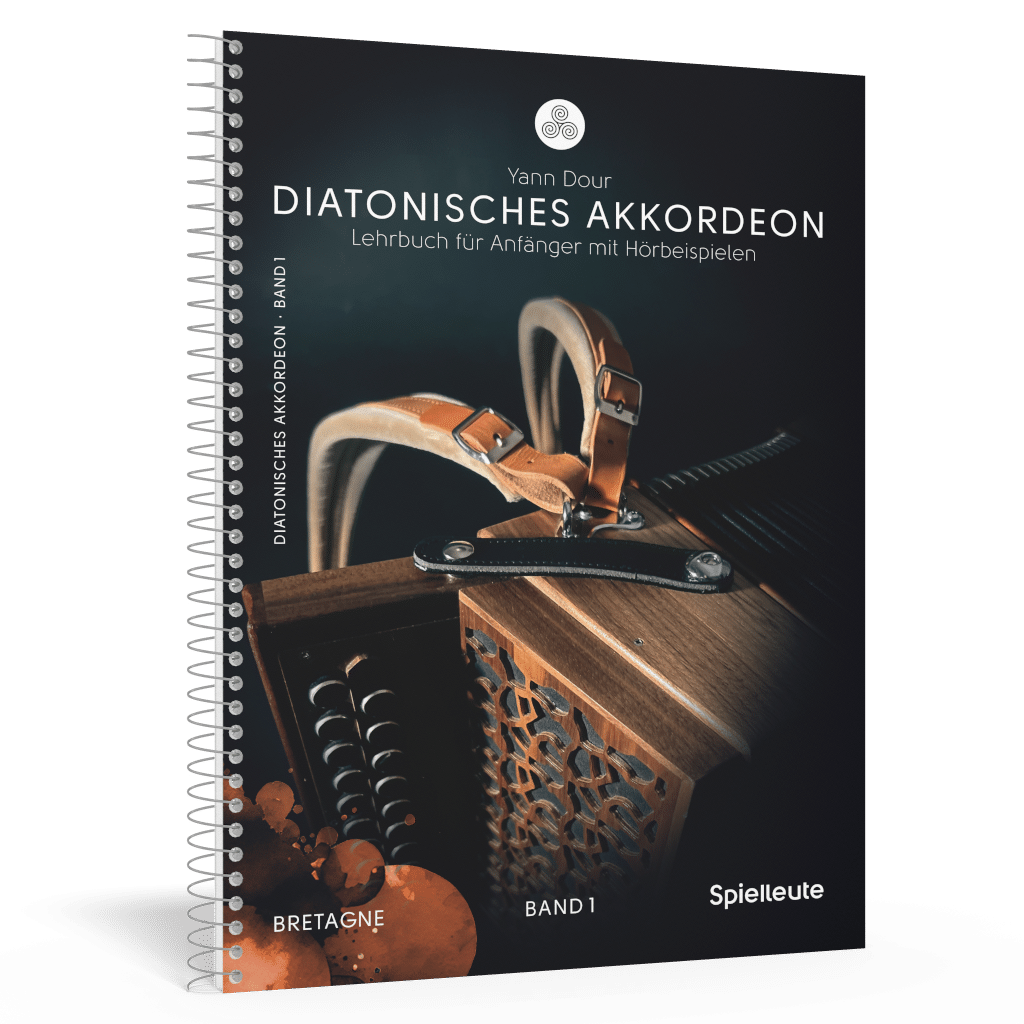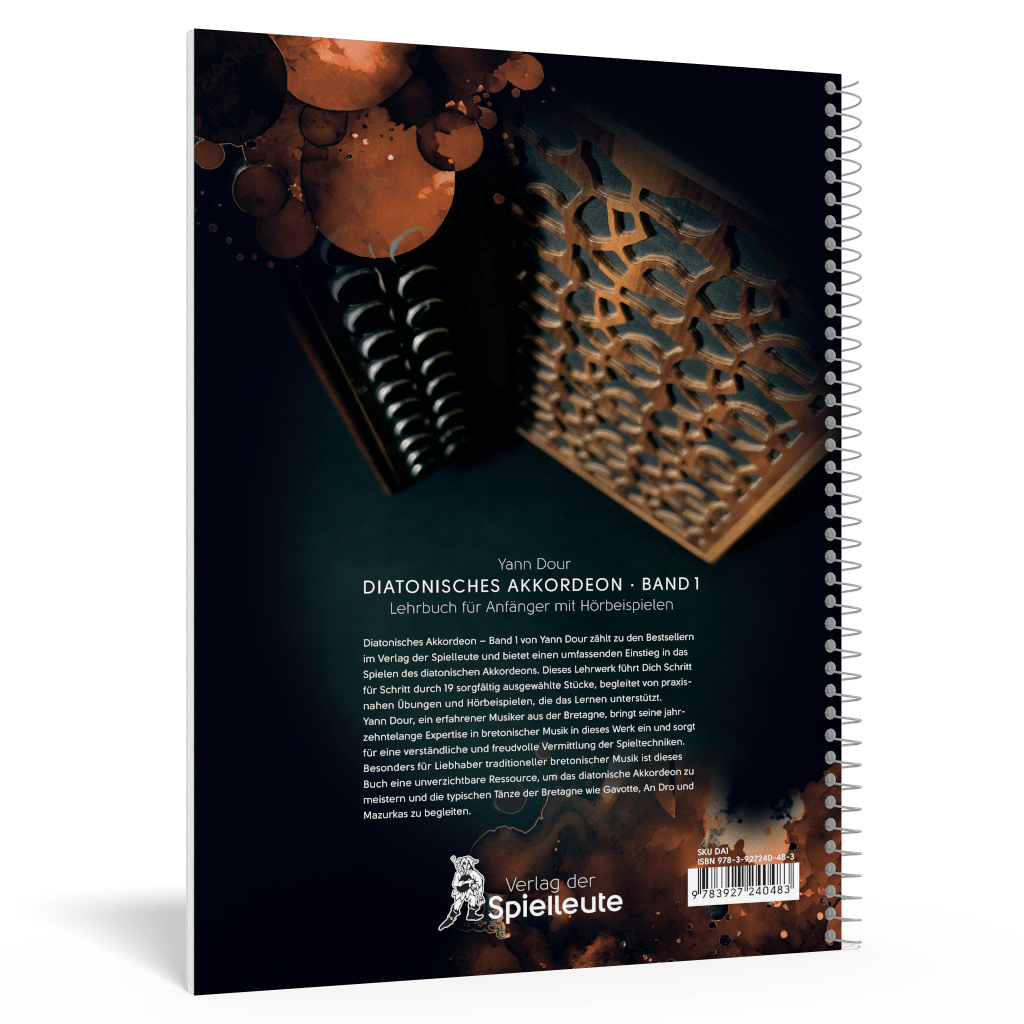Description
This book is for you if you want to pick up a diatonic accordion and get started – without having to struggle through theoretical ballast. With “Diatonic Accordion – Volume 1”, French musician and teacher Yann Dour has written a practical textbook that has stood the test of time for decades. It teaches you the basics in a playful way and always has one thing in mind: the joy of music.
Learning with ear and heart
Yann Dour’s approach is clear: music should sound good. Instead of mere technical exercises, you will find over 40 traditional pieces in this book that will help you develop your playing technique along the way. These include dances such as the polka, Hanter Dro, waltz, En Dro and mazurka – many of them from Brittany, but also from other European regions.
What makes learning particularly enjoyable is that the exercises and pieces are provided with QR codes. Scan them with your smartphone or tablet and you can immediately listen to how it should sound. This helps you practise, motivates you – and gets you to your goal faster.
Content that really gets you ahead
The first part of the book teaches you in an easy-to-understand way:
-
how the accordion works
-
What you should pay attention to when keeping
-
how you work with your left and right hand
-
how rhythm and note lengths are related
-
and what makes a personal style
You will also get lots of tips on choosing your instrument – from the question of how many rows it should have, to the key and the right tuning.
Clear tablatures – ideal even without knowledge of sheet music
Particularly practical: Yann Dour uses tablature notation so that you can get started straight away without having to read music. What to do is clearly indicated for each key and each bellows movement. This is particularly helpful if you are a self-taught learner or have no previous experience with sheet music.
Music that’s fun – from the very first note
The book is structured in such a way that you get straight into playing – with small success stories on every page. You start with simple exercises and pieces, then improve bit by bit. Little by little you will develop a feeling for rhythm, accompaniment and melody.
The pieces are carefully selected and range from simple children’s songs to dance-like folk music. You will notice how your hands become more confident, how the interplay of bass and melody works – and how much fun it is to make music yourself.
For G/C accordions – but flexible in use
The repertoire in the book is notated for instruments in G/C. But the tablatures also work for other keys – as long as you transpose the left-hand chords accordingly. So you can also use the book if you play a D/G or A/D instrument, for example.





